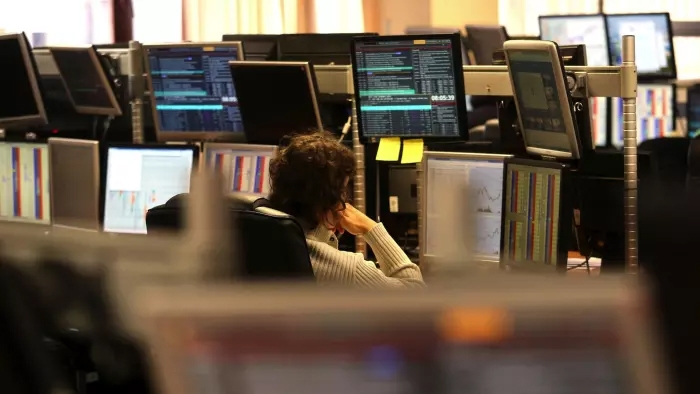
Equity markets have bounced back from yesterday’s falls, with US benchmarks up 2-3% overnight. Oil prices have also recovered. Bond yields have risen in sympathy with the improvement in risk appetite but remain at very low levels. Currency moves have been restrained although, notably, the NZD/AUD cross has fallen again, to its lowest level since mid-November.
It’s been a better session for risk assets overnight, aided by a recovery in oil prices and talk of more fiscal stimulus. The S&P500 is up 2.5%, reversing most of the previous night’s 3.1% fall. Battered energy stocks have outperformed, with the Energy sector in the S&P500 up over 3.5%. There have also been some positive earnings results, including from Chipotle Mexican Grill and Texas Instruments.
Oil prices have recovered over the past 24 hours. The June Brent crude oil futures contract fell below $16 a barrel in London trading (a fall of around 20%), its lowest level since 1999. It has since more than recovered those losses and is now up 7% on the day, to $20.70 per barrel. Oil prices have been supported by a tweet from Trump which said he had instructed the US Navy to shoot down Iranian gunboats if provoked.
The US Senate yesterday passed the $484b fiscal package mainly targeted at small businesses. The bill moves to Congress tonight and then to the President for sign-off. This won’t be the last of the US fiscal measures either, with Treasury Secretary Mnuchin telling Fox News “we need to spend what it takes to win the war.” Democratic Leader of the House Pelosi said she next wanted to focus on assistance for state and local governments although this appears to have found resistance from some Republicans concerned that it will serve to bail-out underfunded state pension schemes. Infrastructure spending is another area likely to come under discussion for government funding.
In Europe, EU leaders are holding a video conference tonight to discuss the region’s plan to tackle COVID-19. Bloomberg reported that the leaders would discuss a €2 trillion recovery plan, although details are sketchy and there are known disagreements between Southern and Northern European countries on the path forward.
Government bond yields have risen overnight, albeit from what were extremely low levels. The 10-year US Treasury yield is 5bps higher, to 0.62%, still well-contained within its April trading range.
European government bond yields also rose overnight, except for Italy, which saw yields fall after reports (since confirmed) that the ECB was considering accepting high-yield bonds as eligible collateral in its operations. Italy’s credit rating is just above the high-yield threshold and it’s conceivable that it is downgraded below investment-grade this year. But the ECB announced a short while ago that it will accept all bonds (including corporates and banks) in its lending operations that were ratings-eligible as at 7th April 2020 (until at least September 2021). The move formalises what it is already doing with sub-investment grade Greek government bonds, which it accepts as collateral and purchases in its QE programme. The announcement also opens the door for the ECB to buy high-yield corporate bonds at a future point, following the lead of the Fed.
On COVID-19, several countries (including France, Spain, Italy and the UK) have reported a slight rise in new cases, although the trend still appears down. Treasury Secretary Mnuchin said he thought most, if not all, of the US economy will be open again by the end of August.
In FX markets, the USD has pushed a little higher, up 0.2% on the day to a 2½ week high. Individual currency performance has been mixed. Most European currencies are lower on the day, but the AUD and CAD have found support from the rise in commodity prices overnight.
The AUD is the best performing currency over the past 24 hours, up 0.7% to around 0.6320. The preliminary estimate of Australian retail sales rose 8.2% in March, the biggest monthly rise (in seasonally adjusted terms) on record. Spending was driven by “unprecedented” demand for staples such as toilet paper, rice and pasta as consumers stockpiled ahead of lockdown. Retail spending looks set for big falls in the coming months though.
The NZD is close to unchanged from this point yesterday. After pushing up against resistance around 0.60 in the London morning, the NZD fell away in New York trading and it sits this morning around 0.5950. The NZD/AUD has remained under downward pressure, falling 0.7% to 0.9415. The cross is trading at its lowest level since mid-November. The RBNZ’s relatively more aggressive QE programme than the RBA is one reason we think the cross still has more downside potential.
The European PMIs are released tonight.

We welcome your comments below. If you are not already registered, please register to comment.
Remember we welcome robust, respectful and insightful debate. We don't welcome abusive or defamatory comments and will de-register those repeatedly making such comments. Our current comment policy is here.